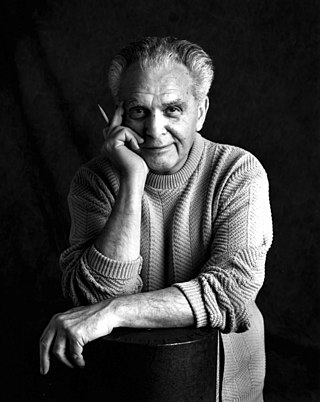
Jack Kirby was an American comic book artist, widely regarded as one of the medium's major innovators and one of its most prolific and influential creators. He grew up in New York City and learned to draw cartoon figures by tracing characters from comic strips and editorial cartoons. He entered the nascent comics industry in the 1930s, drawing various comics features under different pen names, including Jack Curtiss, before settling on Jack Kirby. In 1940, he and writer-editor Joe Simon created the highly successful superhero character Captain America for Timely Comics, predecessor of Marvel Comics. During the 1940s, Kirby regularly teamed with Simon, creating numerous characters for that company and for National Comics Publications, later to become DC Comics.

"Fourth World" is a metaseries of connected comic book titles written and drawn by Jack Kirby and published by DC Comics from 1970 to 1973. Although they were not marketed under this title until the August–September 1971 issues of New Gods and Forever People, the terms Fourth World and Jack Kirby's Fourth World have gained usage in the years since. Kirby created the Fourth World concept in the 1970s. The series is a science-fiction based mythology that revolves around ancient space deities known as the New Gods. The New Gods are similar to the gods of Earth lore.
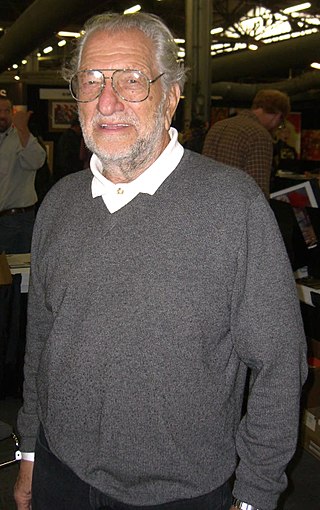
Joseph Kubert was a Polish-born American comic book artist, art teacher, and founder of The Kubert School. He is best known for his work on the DC Comics characters Sgt. Rock and Hawkman. He is also known for working on his own creations, such as Tor, Son of Sinbad, and the Viking Prince, and, with writer Robin Moore, the comic strip Tales of the Green Beret.
Notable events of 1965 in comics.

Alexander Toth was an American cartoonist active from the 1940s through the 1980s. Toth's work began in the American comic book industry, but he is also known for his animation designs for Hanna-Barbera throughout the 1960s and 1970s. His work included Super Friends, Fantastic Four, Space Ghost, Sealab 2020, The Herculoids and Birdman. Toth's work has been resurrected in the late-night, adult-themed spin-offs on Cartoon Network’s late night sister channel Adult Swim: Space Ghost Coast to Coast, Sealab 2021 and Harvey Birdman, Attorney at Law.

Showcase is a comic anthology series published by DC Comics. The general theme of the series was to feature new and minor characters as a way to gauge reader interest in them, without the difficulty and risk of featuring untested characters in their own ongoing titles. Showcase is regarded as the most successful of such tryout series, having been published continuously for more than 14 years, launching numerous popular titles, and maintaining a considerable readership of its own. The series ran from March–April 1956 to September 1970, suspending publication with issue #93, and then was revived for eleven issues from August 1977 to September 1978.
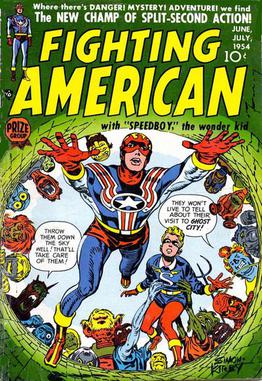
Fighting American is a superhero created in 1954 by the writer-artist team of Joe Simon and Jack Kirby. Published by the Crestwood Publications imprint Prize Comics, it was, contrary to standard industry practices of the time, creator-owned. Harvey Comics published one additional issue in 1966. One final inventoried tale was published in 1989, in a Marvel Comics hardcover collection of all the Fighting American stories.
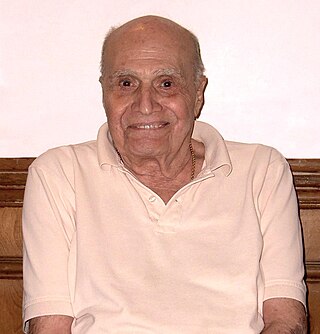
Carmine Infantino was an American comics artist and editor, primarily for DC Comics, during the late 1950s and early 1960s period known as the Silver Age of Comic Books. Among his character creations are the Black Canary and the Silver Age version of DC superhero the Flash with writer Robert Kanigher, the stretching Elongated Man with John Broome, Barbara Gordon the second Batgirl with writer Gardner Fox, Deadman with writer Arnold Drake, and Christopher Chance, the second iteration of the Human Target with Len Wein.
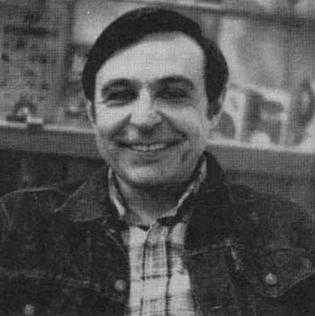
Ross Andru was an American comics artist and editor whose career in comics spanned six decades. He is best known for his work on The Amazing Spider-Man, Wonder Woman, The Flash, and The Metal Men, and for having co-created the character called The Punisher.
Robert Kanigher was an American comic book writer and editor whose career spanned five decades. He was involved with the Wonder Woman franchise for over twenty years, taking over the scripting from creator William Moulton Marston. In addition, Kanigher spent many years in charge of DC Comics's war titles and created the character Sgt. Rock. Kanigher scripted what is considered the first Silver Age comic book story, "Mystery of the Human Thunderbolt!", which introduced the Barry Allen version of the Flash in Showcase #4.
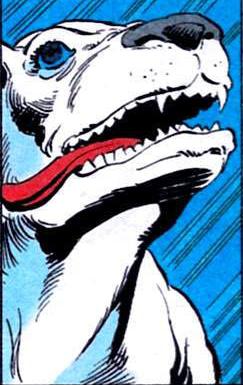
Rex the Wonder Dog is a fictional superhero dog in the DC Comics universe. Created in 1952 by Robert Kanigher of Wonder Woman fame and artist Alex Toth, Rex has sometimes been compared to Superman's dog Krypto, who was created three years later. While the two canine crime fighters do share some similarities, they are decidedly different.

Russell Heath Jr., was an American artist best known for his comic book work, particularly his DC Comics war stories and his 1960s art for Playboy magazine's "Little Annie Fanny" feature. He also produced commercial art, two pieces of which, depicting Roman and Revolutionary War battle scenes for toy soldier sets, became familiar pieces of Americana after gracing the back covers of countless comic books from the early 1960s to early 1970s.
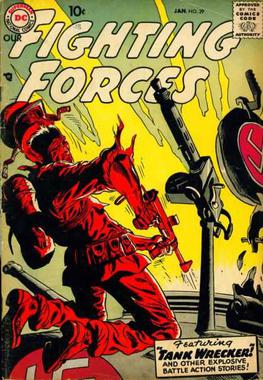
Our Fighting Forces is a war comics anthology series published by DC Comics for 181 issues from 1954 to 1978.

G.I. Combat is an American comics anthology featuring war stories. It was published from 1952 until 1956 by Quality Comics, followed by DC Comics until its final issue in 1987. In 2012 it was briefly revived.
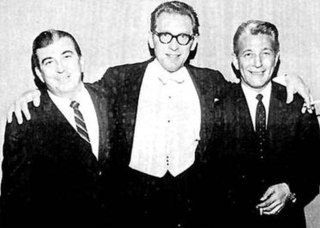
Robert Bernstein, sometimes credited as R. Berns, was an American comic book writer, playwright and concert impresario, notable as the founder of the Island Concert Hall recital series which ran for 15 years on Long Island.
Samuel Joseph Glanzman was an American comics artist and memoirist. Glanzman is best known for his Charlton Comics series Hercules, about the mythological Greek demigod; his autobiographical war stories about his service aboard the U.S.S. Stevens for DC Comics and Marvel Comics; and the Charlton Comics Fightin' Army feature "The Lonely War of Willy Schultz", a Vietnam War-era serial about a German-American U.S. Army captain during World War II.

Our Army at War is an American comic book anthology published by DC Comics that featured war-themed stories and featured the first appearances of Sgt. Rock and Enemy Ace. The series was published from August 1952 to February 1977, then was renamed Sgt. Rock in March 1977, continuing the numbering sequence of Our Army at War.
Charles J. "Jerry" Grandenetti was an American comic book artist and advertising art director, best known for his work with writer-artist Will Eisner on the celebrated comics feature "The Spirit", and for his decade-and-a-half run on many DC Comics war series. He also co-created the DC comic book Prez with Joe Simon.

Men of War is the name of several American comic book series published by DC Comics. For the most part, the series was a war comics anthology featuring fictional stories about the American military during World War II.
Black Canary is a superheroine appearing in American comic books published by DC Comics. Created by the writer-artist team of Robert Kanigher and Carmine Infantino, the character debuted in Flash Comics #86 as the first Black Canary in the Golden Age of Comic Books. Strong, mysterious, gutsy and romantic, she has been called "the archetype of the new Film Noir era heroine."














